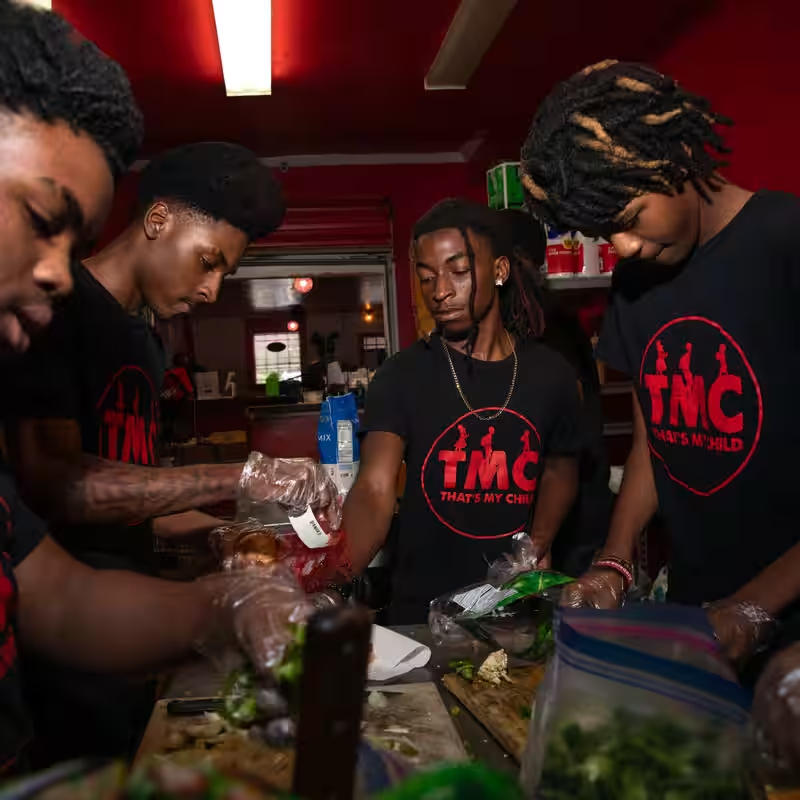In the heart of Montgomery, Alabama—a city where gun violence has claimed too many young lives—a group of teenagers is flipping hot dogs, not gang signs. At That’s My Dog Jr., a brightly painted eatery staffed entirely by teens, the sizzle of $3.99 char-grilled dogs drowns out the echoes of gunfire that too often haunt the streets.
Teens Run Hot Dog Spot: A Beacon in a City Under Siege
Opened in 2019 by the nonprofit That’s My Child, That’s My Dog Jr. isn’t just a restaurant—it’s a lifeline. In a city where poverty hovers near 20% and good jobs are scarce, the restaurant offers teens aged 15 to 17 a rare opportunity: steady pay ($10–$13/hour), job training, and a safe space to build community away from the pull of gangs and violence.
“We may be a small part of the solution,” says Charles Lee, founder of the nonprofit and a former gang member himself, “but for these kids, it’s not just about a job. It’s about belonging.”
Gun Violence in Montgomery: The Backdrop
Montgomery has long struggled with youth-involved gun violence. On October 4, 2025, just blocks from the State Capitol, a mass shooting left two dead—including a 17-year-old—and 12 injured, most under 20. Police later charged three teens and one adult with capital murder.
While city leaders debate curfews and increased patrols, many residents argue the real fix lies in opportunity—not enforcement. “There’s no money down here,” says 17-year-old Jay Ware, who witnessed the October 4 shooting firsthand. “It’s just a whole lot of violence.”
Inside That’s My Dog Jr.: More Than Just Hot Dogs
The restaurant operates four days a week (Monday–Thursday, 4–7 p.m.) so teens can balance work with school. The menu is simple but beloved: chili cheese dogs, crispy chicken sandwiches with “secret sauce,” and fried Oreos. Yet the real recipe is camaraderie.
Staffed by nine teens per nine-week rotation, the kitchen buzzes with laughter, teasing, and the occasional onion-induced tears. “Sheesh, this stings!” 15-year-old Felics Carter groaned during a recent shift, battling tears while chopping onions.
Despite the levity, trauma lingers. Zavian Milliner, 16, lost a close friend to a stray bullet in sixth grade. Summer Dixon, 15, says she’s used to hearing gunshots while doing homework. For them, the restaurant is both escape and anchor.
From Fryer to Future: Building Real Skills
Participants don’t just learn to grill—they learn financial literacy, interview prep, and how to open a bank account. Many transition to jobs at places like Chick-fil-A; a select few become managers at the restaurant itself.
The program even hands out “fun money”—colorful tokens redeemable at the Alabama National Fair—though some teens opted out of a recent fair date, fearing retaliatory violence.
By the Numbers: Impact in a High-Risk City
| Metric | Detail |
|---|---|
| Hourly Wage | $10–$13 |
| Shift Hours | 4–7 p.m., Mon–Thu |
| Health Inspection Score | 97/100 |
| Montgomery Poverty Rate | ~20% (since 2020) |
| Homicides (Jan–Jun 2025) | 13% decrease vs. 2024 |
While citywide violence remains high, the restaurant has become a quiet success story—one hot dog at a time.




